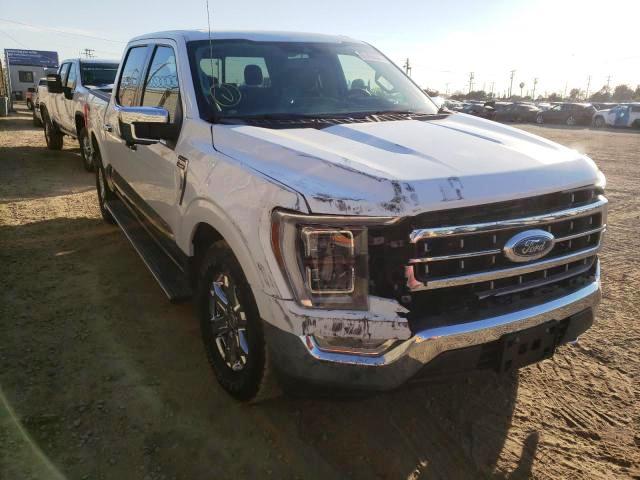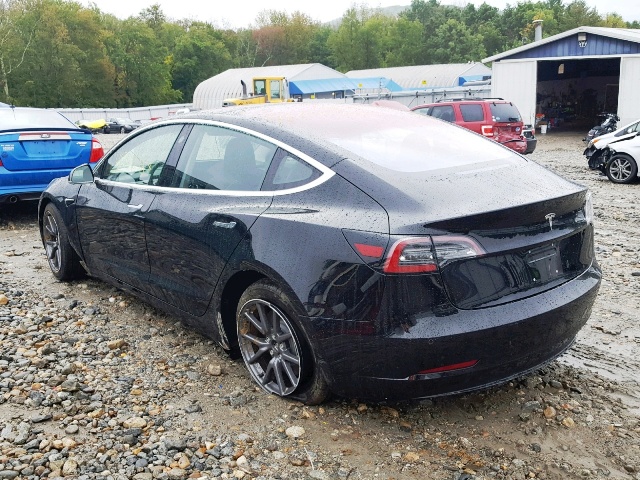| REPAIRABLE SALVAGE CARS TRUCKS MOTORCYCLES BOATS FOR SALE |
HOME I l CONTACT I ABOUT I FAQ I 100% MONEY BACK I DATABASE
 2004 Ferrari 360 Flood Car $26,000 |
 2010 BMW M3 Theft Recovery $7,500 |
 2015 Camaro SS Theft Recovery $3,900 |
 2009 Lamborghini Collision Damage $29,000 |
 2021 FORD F150 FX4 Theft Recovery $8,000 |
 2018 HD Street Bob Theft Recovery $3,000 |
 2015 Chevy Silverado Flood Damage $5,000 |
 1969 Camaro SS Theft Recovery $7,000 |
 2022 Chevy 1 Ton Theft Recovery $17,000 |
 2014 C7 Corvette Theft Recovery $13,000 |
 2020 Tesla 3 Theft Recovery $5,000 |
2015 HD Road Glide Flood Damage $2,900 |
|
VIEW MORE THAN 11,000 DEEP DISCOUNTED FIXER UPPER VEHICLES FOR SALE EACH WEEK These are just a few examples - 11,000 vehicles in stock each week. |
|||||
 '67 Mustang Fastback Flood Damage $5,000 |
 1958 300SL Gullwing Old Project Car MAKE OFFER |
 2014 BMW 328i Collision Damage $3,000 |
 1967 Corvette 427 Old Project Car $35,000 |
 2015 Ducati 1199 Theft Recovery $1,500 |
1995 Ferrari F50 Collision Damage MAKE OFFER |
 2010 Cat Skid Steer Engine Fire $5,000 |
 2013 Ford F150 Collision Damage $3,500 |
 2013 Porsche 911 Theft Recovery $11,000 |
 2008 Murcielago Collision Damage $28,000 |
 1955 Chevy Nomad Theft Recovery $6,500 |
 1985 930 Turbo Theft Recovery MAKE OFFER |
 1962 Ferrari 250 GTE Project Car MAKE OFFER |
 2015 Hayabusa 1300R Flood Damage $1,500 |
 2014 MB CLA250 Flood Damage $3,000 |
 1969 Corvette 427 Flood Car $16,000 |
2012 Harley XL1200C Theft Recovery $2,000 |
 1967 Pontiac GTO Theft Recovery $7,000 |
|
THE LARGEST INVENTORY OF REPAIRABLE CARS AT GUARANTEED BEST PRICES These are just few examples - View our entire inventory. |
|||||
 2013 MB S550 Water Damage $6,000 |
2012 BMW X5 Flood Car $3,000 |
 2013 Nissan 370Z Theft Recovery $2,900 |
 2010 Honda Accord Theft Recovery $2,000 |
 1965 Corvette 396 Water Damage $39,000 |
 2015 Silverado Truck Tornado Damage $4,900 |
 1969 Camaro Z28 Theft Recovery $7,500 |
 2010 Mercedes SL550 Flood Car $6,000 |
 1967 Jaguar XKE Flood Car MAKE OFFER |
 1998 Turbo Supra Theft Recovery $4,000 |
2015 Jeep Rubicon Water Damage $4,900 |
 1967 GTO Convertible Flood Car $19,500 |
 2010 Porsche 911 C4S Rollover Damage $15,000 |
 2009 Ford GT Theft Recovery $66,000 |
2015 Harley Fat Bob Flood Bike $2,500 |
2012 Mini Cooper Theft Recovery $3,000 |
2010 Honda CR-V Street Flood $2,500 |
2012 Hayabusa Theft Recovery $1,800 |
 2010 Nissan Skyline Collision Damage $15,000 |
 2012 Honda Goldwing Theft Recovery $2,000 |
 2010 Viper SR10 Collision Damage $26,500 |
 2010 Audi R8 Theft Recovery $22,000 |
 2020 Freightliner RV Water Damage $20,500 |
 1970 Challenger Engine Fire MAKE OFFER |
 2004 Ferrari Enzo Collision Damage $475,000 |
 2012 BMW Z4 Storm Damage $2,900 |
 2010 Toyota Camry Theft Recovery $2,000 |
1995 Cat Backhoe Theft Recovery $6,000 |
2010 Dodge Ram Theft Recovery $3,000 |
 2012 Corvette C6 Dash Fire $3,900 |
 2016 Arctic Cat 650 Theft Recovery $1,500 |
 1965 Mustang Conv. Theft Recovery $4,000 |
 2000 Ferrari F550 Water Damage $26,000 |
 2014 Range Rover Tornado Damage $13,000 |
 2010 BMW 750iL Theft Recovery $3,000 |
 1965 Cobra Replica Theft Recovery $6,000 |
 2016 Mustang GT Theft Recovery $3,500 |
 1960 Porsche 356B Flood Car MAKE OFFER |
 2015 Honda CBR600 Theft Recovery $1,900 |
 2014 MB CLA250 Theft Recovery $3,500 |
 1990 Porsche 911 Theft Recovery MAKE OFFER |
 1969 Camaro Z28 Theft Recovery MAKE OFFER |
|
THESE ARE JUST A FEW EXAMPLES - MORE THAN 11,000 VEHICLES IN STOCK Inventory Changes Daily. |
|||||
 2000 Ferrari 360 Rollover Damage $27,000 |
2020 Jeep Rubicon Theft Recovery $13,000 |
 2015 Harley FLHTCUI Water Damage $3,000 |
 1972 Chevelle Conv. Flood Car $18,000 |
 2012 Honda CR-V Flood Car $2,000 |
1964 Corvette Conv. Theft Recovery $18,000 |
 2015 Ford F150 Flood Damage $4,900 |
 1985 308 Ferrari Flood Car $29,000 |
 2012 BMW 335 Diesel Theft Recovery $3,000 |
 2015 Harley FXDWG Water Damage $2,500 |
 2010 Porsche 911 GT2 Flood Damage $28,000 |
 2012 Escalade Theft Recovery $3,000 |
|
1967 Jaguar XKE Project Car MAKE OFFER |
 2018 Sea-Doo GTX Theft Recovery $1,800 |
2010 Tesla Roadster Theft Recovery $6,000 |
 2012 Silverado Truck Theft Recovery $4,000 |
 2014 MB 250CLA Theft Recovery $3,000 |
 2000 Cat D4H Dozer Theft Recovery $14,000 |
2020 Jeep Rubicon Theft Recovery $6,900 |
 2007 Escalade Theft Recovery $2,900 |
1968 Camaro Collision Damage $15,000 |
 2022 5th Wheel RV Theft Recovery $7,000 |
 2013 MB GLK350 Collision Damage $6,000 |
 1998 McLaren F1 Bank Repo MAKE OFFER |
 2010 John Deere 320 Theft Recovery $5,000 |
 2013 Nissan 370Z Water Damage $2,900 |
 2015 International Theft Vandal Damage $12,500 |
1966 Olds Toronado Engine Fire $2,500 |
1981 Porsche 911 Collision Damage $15,000 |
1972 BMW 2002 tii Project Car MAKE OFFER |
 2006 Dodge Viper Front End Damage $19,000 |
 2012 Suzuki GSX1300 Theft Recovery $1,900 |
 2016 Tesla S Theft Recovery $6,000 |
 2012 Ford F150 4X4 Theft Recovery $4,500 |
 2006 Case 580M Theft Recovery $6,000 |
 2012 Ford F450 Theft Recovery $5,000 |
|
VEHICLES ARE SOLD WITH TITLES - WORLDWIDE DELIVERY - 100% MONEY-BACK GUARANTEE Inventory Changes Daily - These Are Just A Few Examples |
|||||
 2012 Ducati 1198S Water Damage $1,900 |
 1958 F.I. Corvette Engine Fire MAKE OFFER |
 2012 Dodge Ram Collision Damage $3,000 |
 2013 Corvette Z06 Theft Recovery $16,000 |
 1967 Corvette Collision Damage $39,000 |
 2012 Dodge 3500 Water Damage $4,900 |
 2012 BMW 535i Flood Car $3,500 |
 2012 Honda Accord Flood Car $2,000 |
 1965 Mustang Conv. Collision Damage $6,000 |
 2020 Big Dog Pit Bull Theft Recovery $4,000 |
 2010 Honda CR-V Collision Damage $2,000 |
 2010 Ferrari California Collision Damage MAKE OFFER |
 2013 Mercedes S550 Theft Recovery $5,900 |
 2012 Honda CBR1000 Theft Recovery $2,000 |
 2012 BMW 335D Collision Damage $3,000 |
 2014 HD Electra Glide Theft Recovery $3,500 |
 1963 Porsche 356 Collision Damage MAKE OFFER |
 2008 Ford F150 Water Damage $3,000 |
 2008 BMW M3 Collision Damage $7,000 |
 2016 Citation Jet CJ2 Engine Damage MAKE OFFER |
2015 Jeep Rubicon Roll Over Damage $4,000 |
 2014 Jeep Cherokee Theft Recovery $3,000 |
 2015 HD Road King Water Damage $3,000 |
 2013 Jaguar XKR S Theft Recovery MAKE OFFER |
 2009 Cayman Collision Damage $6,000 |
 2012 MB ML350 Theft Recovery $5,000 |
 69 Camaro Pace Car Project Car MAKE OFFER |
 2005 Ford GT Collision Damage $66,000 |
 2009 Rover Sport Theft Recovery $5,000 |
 2012 Ducati 1198 S Theft Recovery $2,000 |
 2009 Hummer H4 Water Damage $4,500 |
 2006 Lamborghini Rear End Damage $27,000 |
 2013 Mazda Miata Theft Recovery $2,500 |
 2012 Boxster Theft Recovery $6,000 |
 2012 Cadillac CTS-V Theft Recovery $3,000 |
 2005 Lamborghini Theft Recovery MAKE OFFER |
|
FIXABLE CARS, TRUCKS, BOATS, RVS, MOTORCYCLES AT DEEP DISCOUNTED PRICES These are just a few examples - inventory changes daily |
|||||
 1960 Corvette Theft Recovery MAKE OFFER |
2004 MB Maybach 57 Theft Recovery $15,000 |
 2008 Escalade Theft Recovery $3,000 |
 2012 Ducati 999 Water Damage $2,000 |
 2012 Mini Cooper Water Damage $2,500 |
 1999 Ferrari 550 Collision Damage $28,000 |
 1994 Turbo Supra Flood Car $3,500 |
 2012 Hayabusa 1300 Theft Recovery $2,000 |
 2006 Maybach 57 Theft Recovery $12,000 |
 2000 Viper GTS Collision Damage $25,000 |
 2010 BMW 528i Collision Damage $2,900 |
 2004 Bentley Arnage Flood Car $13,000 |
 2015 Honda Goldwing Water Damage $2,500 |
 2016 Tesla Model S Collision Damage $5,000 |
 2012 Toyota Camry Theft Recovery $2,000 |
 2004 BMW M3 Flood Car $6,000 |
 2010 Toyota Prius Theft Recovery $2,000 |
 1965 Corvette Collision Damage MAKE OFFER |
 1968 Corvette 427 Collision Damage $26,000 |
 2006 Mercedes SL500 Flood Car $5,000 |
 2014 BMW M4 Theft Recovery $7,000 |
 2006 Ford GT Collision Damage $66,000 |
 2020 Bounder RV Tornado Damage $22,000 |
 2020 Harley Custom Water Damage $4,000 |
 1987 Ferrari 328 GTS Engine Fire $28,000 |
 2020 Harley Fat Boy Water Damage $4,-00 |
 2008 BMW 328iC Flood Car $3,000 |
 2010 Silverado Collision Damage $4,000 |
 2007 BMW Z4 Water Damage $2,500 |
 1967 Jaguar XKE FHC Water Damage MAKE OFFER |
 2008 Corvette C6 Flood Car $4,000 |
 2010 Mustang GT Collision Damage $2,500 |
 Cat Road Grader Water Damage $7,000 |
2015 Harley Tri Glide Water Damage $4,900 |
 2014 Grand Cherokee Theft Recovery $3,000 |
 2012 Indian Chief Theft Recovery $3,000 |
|
BUY WITH CHECK, CREDIT CARD, PAYPAL, EPAY, CASH, BANK WIRE, MONEY ORDER These are just a few samples of our inventory. |
|||||
HOME I BUY NOW l CONTACT US I ABOUT US I FREQUENTLY ASKED QUESTIONS I 100% MONEY BACK I DATABASE






























